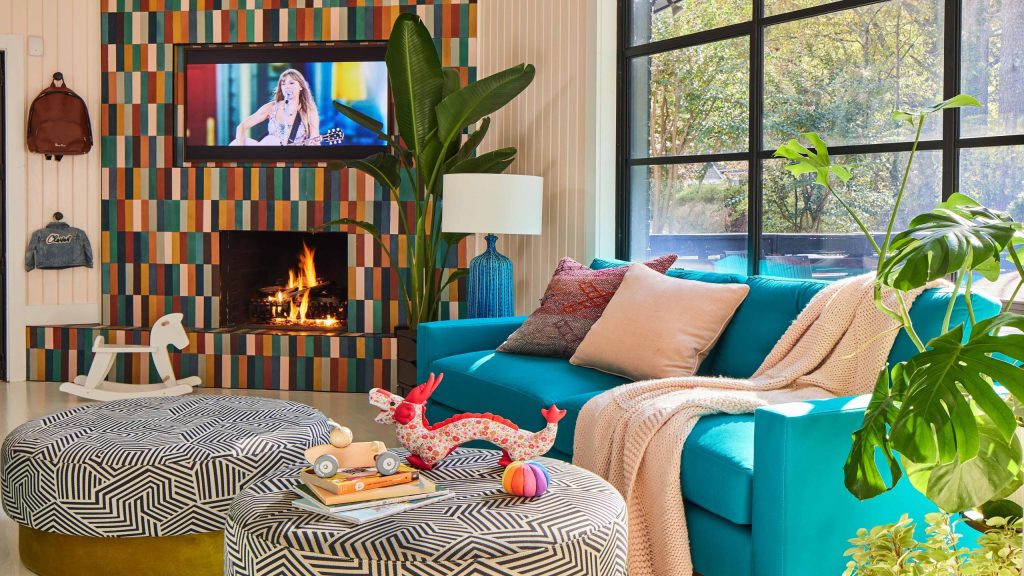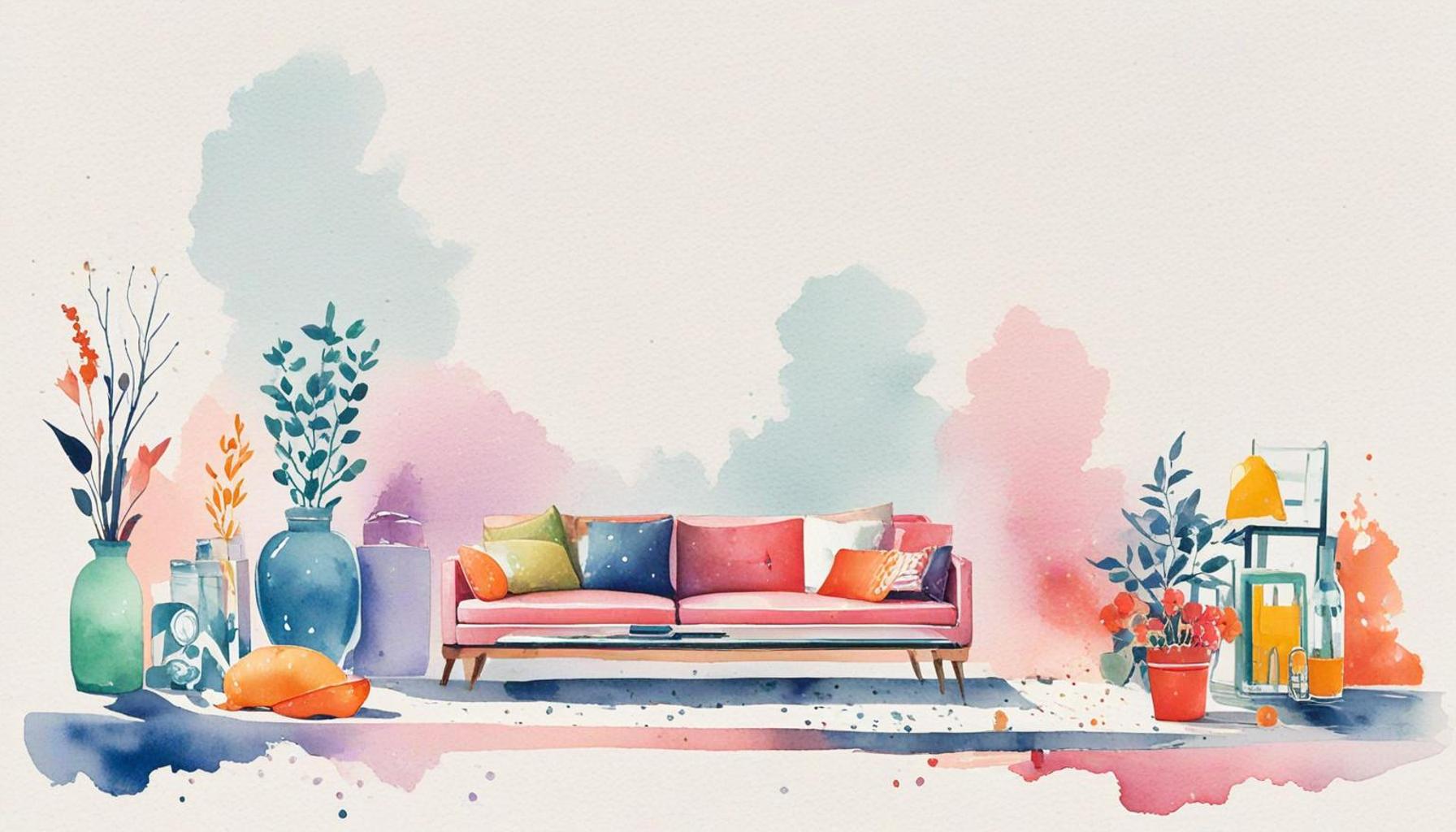How Intentional Design Can Facilitate the Transition to a Minimalist Lifestyle

Embracing Minimalism through Intentional Design
The journey towards a minimalist lifestyle can often feel overwhelming. Yet, intentional design plays a crucial role in making this transition smoother and more achievable. By thoughtfully curating your environment, you can create a space that promotes clarity, tranquility, and purpose. This approach not only redefines your physical surroundings but also enriches your mental landscape.
- Holistic Approach: Intentional design is rooted in a holistic approach that prioritizes functionality and simplicity. By understanding how each item in your space serves a purpose, you can effectively strip away distracting elements. For instance, a well-organized home office, with only essential tools at hand, can lead to more productive work sessions.
- Mindful Choices: It is essential to choose furniture, décor, and storage solutions that enhance efficiency and simultaneously reduce clutter. Opting for multi-purpose furniture, such as a coffee table with hidden storage or a sofa bed, can maximize your space while allowing for flexibility in room usage. Each item you select should bring joy or serve a clear necessity, resonating with the minimalist ethos.
- Sustainable Practices: Emphasizing quality over quantity in your design choices cultivates a more sustainable lifestyle, which aligns seamlessly with minimalist values. Investing in well-made, timeless pieces often results in reduced consumer waste and a smaller environmental footprint. Brands like IKEA and West Elm now focus on sustainable materials, making it easier to furnish your space responsibly.
Creating spaces that reflect minimalism involves more than mere decluttering; it requires a strategic mindset. This mindset appreciates how design elements interact within your living environment. For example, open floor plans encourage airflow and natural light, which not only beautifies a space but also enhances your well-being. This kind of purposeful arrangement empowers individuals to enjoy their surroundings and nurtures personal growth.
Transformative Benefits
Adopting intentional design can lead to significant benefits that ripple through various aspects of daily living:
- Enhanced Focus: A decluttered environment fosters clarity of thought. When visual distractions are minimized, individuals often find they can concentrate better on tasks, whether studying, working, or engaging in creative pursuits.
- Reduced Stress: Minimalist spaces create an atmosphere of calmness and peace of mind. Many people report feeling more relaxed in environments that are free from excess, highlighting the importance of creating a nurturing space.
- Improved Productivity: Functionality-driven layouts can significantly boost efficiency in daily tasks. Practices like the KonMari Method advocate for keeping only those items that spark joy, leading to intentional choices that streamline activities and reduce the time spent searching for misplaced things.
As this article delves into how intentional design can facilitate your path to a minimalist lifestyle, it offers insights and practical tips along the way. Preparing for this cultural shift requires understanding the intrinsic relationship between your space and your well-being. The quest for minimalism is not just about physical space but also about the mental and emotional room to grow and thrive.
DISCOVER MORE: Click here to learn about conscious consumerism

Creating Intentional Spaces for Minimalist Living
As the minimalist movement gains momentum in the United States, many individuals find themselves grappling with the notion of simplifying their lives. The principle of intentional design offers a beacon of hope for those looking to transition towards a more minimalist lifestyle. It encourages a conscious approach to how we curate and arrange our living spaces, focusing on creating environments that not only look aesthetically pleasing but also support our physical and mental well-being.
Intentional design emphasizes the importance of mindful organization. The process of evaluating each item in your home before letting it occupy space can be eye-opening. Questions such as “Does this serve a purpose?” or “Does this object bring me joy?” become fundamental in deciding what deserves to remain. This practice ensures that only the most essential and cherished items contribute to your living environment, paving the way for a simplified and clutter-free space.
Principles of Intentional Design
At the core of intentional design lies its guiding principles, which can help individuals not only reshape their spaces but also reinforce their commitment to minimalist living:
- Functionality Over Aesthetics: While beauty is important, it should not overshadow practicality. Choosing items that serve multiple functions eliminates the need for excess possessions. For example, a dining table that doubles as a workspace not only saves space but also encourages flexibility in how you utilize your environment.
- Neutral and Natural Materials: Using materials like wood, stone, and organic fabrics creates a serene and inviting atmosphere. These choices also reinforce sustainable design practices that resonate with minimalism while fostering a connection to nature.
- Strategic Color Palettes: A well-thought-out color scheme can evoke a sense of calm and focus. Soft, neutral tones often provide an ideal backdrop for a minimalist space, allowing the few decorative elements to shine without overwhelming the senses.
Furthermore, the concept of zoning spaces can enhance both functionality and serenity. By clearly defining areas for work, relaxation, and social interaction, you limit distractions and promote a sense of purpose in each corner of your home. This means that each zone serves as a dedicated space to nourish different aspects of your life, which aligns with the minimalist philosophy of removing the unnecessary to focus on what truly matters.
As the lines between work and life blur, particularly in remote work environments, it becomes vital to create intentional spaces that cater to your daily needs while fostering motivation and creativity. The act of designing with intention transforms your home into a sanctuary that supports a minimalist lifestyle—not just in aesthetics, but in enhancing everyday experiences and promoting overall well-being.
The Shift Toward Minimalism
Embracing intentional design is not merely about reducing belongings; it’s a fundamental shift in how we perceive and interact with our environments. By cultivating spaces that reflect your core values, you are empowered to live authentically. Each step taken towards intentionality fosters a deeper connection to your surroundings, enabling you to relish the joys of a minimalist lifestyle.
| Design Principles | Impact on Minimalism |
|---|---|
| Functionality | Functional design emphasizes usability, ensuring every item has a purpose, which reduces clutter and enhances the enjoyment of living simply. |
| Aesthetics | Visually appealing designs encourage the decluttering impulse, as people are drawn to environments that promote serenity and simplicity. |
| Sustainability | Sustainable design choices support minimalism, emphasizing quality over quantity and fostering an appreciation for long-lasting items. |
| Flexibility | Adaptable spaces promote minimalism by allowing easy transformations of environments, which encourages thoughtful selection of belongings. |
The integration of these design principles showcases how intentional design can serve as a catalyst for embracing a minimalist lifestyle. By implementing functionality, aesthetics, sustainability, and flexibility into everyday living spaces, individuals can effectively facilitate their journey toward minimalism. This approach cultivates a deeper understanding of the value of space and objects, leading to a more meaningful existence by consciously choosing what to keep and utilizing the concept of intentionality in all aspects of life.
DIVE DEEPER: Click here to discover effective personal organization strategies
Personalizing Your Minimalist Journey Through Intentional Design
Transitioning to a minimalist lifestyle is a deeply personal endeavor, and intentional design plays a crucial role in tailoring your living space to meet your unique needs. By prioritizing individual preferences and lifestyles, intentional design transforms the process of downsizing and decluttering into an empowering journey of self-discovery. This approach helps individuals and families create spaces that resonate with their values and lifestyle aspirations.
A critical aspect of this personalization is the incorporation of adaptive furniture and modular designs. For instance, furniture that can be reconfigured or multifunctional pieces can significantly enhance both aesthetics and functionality. When selecting furniture, consider pieces that can grow and change with you, ensuring that your space evolves rather than stifles your journey to minimalism. For example, a sofa that converts into a guest bed not only saves space but also simplifies hosting friends or family, aligning with minimalist ideals.
The Importance of Emotional Connection in Design
Intentional design encourages the selection of items that have a strong emotional connection or tell a story, reinforcing the notion that our spaces can reflect our identities. This emotional aspect can be vital in making the minimalist transition less daunting. When surrounding ourselves with items that evoke positive memories or feelings, we create a sanctuary that uplifts rather than weighs down. For example, displaying a single framed photograph can offer a powerful focal point, serving as a reminder of cherished moments while reducing visual clutter.
Moreover, minimalism does not solely entail the removal of items but can also incorporate decorative elements that resonate with your life’s experiences. A carefully curated collection, such as a few travel souvenirs or handmade crafts, can embody your past, enriching your space without overwhelming it. Such practices champion the idea of “meaningful minimalism,” where less truly becomes more when each piece in your home fulfills a purpose or brings joy.
Natural Light and the Effect on Mindset
Another remarkable aspect of intentional design in minimalist living is the emphasis on natural light. Maximizing sunlight can greatly impact both the ambiance of a space and the psychology of its inhabitants. Consider using window treatments that allow light to filter while still providing privacy. This creates a harmonious balance that reflects the simplicity and openness characteristic of a minimalist lifestyle. Additionally, the presence of light has been linked to enhanced mood and productivity levels, supporting the notion that intentional design strategically positions elements that nurture well-being.
Utilizing greenery in your living space is another actionable strategy that aligns with intentional design principles. Houseplants not only purify the air but also bring a sense of vitality into an otherwise sparse environment. Integrating biophilic design elements promotes tranquility and can act as a reminder of nature’s inherent beauty, appealing to those who embrace minimalism while yearning for a connection to the outdoors.
Ultimately, embracing intentional design as part of a minimalist ethos allows individuals to cultivate a home that is not only visually appealing but also a true reflection of their identities. By carefully choosing elements that resonate with personal values, emotional connections, and well-being, the minimalist journey transforms from a mere aesthetic choice to a profound lifestyle commitment.
DISCOVER MORE: Click here to learn about personal organization strategies
Conclusion: Embracing Intentional Design for a Meaningful Minimalist Lifestyle
In conclusion, intentional design serves as a powerful tool in facilitating the transition to a minimalist lifestyle, allowing individuals to create spaces that are not only functional but also profoundly personal. By carefully considering elements such as adaptive furniture, emotional connections, and natural light, one can craft an environment that aligns with personal values and aspirations. This approach transforms what could be a daunting process of decluttering into an enriching journey of self-discovery and fulfillment.
The concept of meaningful minimalism emphasizes the importance of surrounding ourselves with items that enhance our lives and reflect our experiences. By selecting only those pieces that hold emotional significance or practical value, we promote an atmosphere that is uplifting and serene. Furthermore, the integration of natural elements and light within our spaces nurtures our well-being, proving that less can indeed lead to more—more joy, more clarity, and more authenticity.
As you embark on your own minimalist journey, view intentional design not just as a methodology, but as a mindset. Seek inspiration in the simplicity around you and allow your living space to evolve in a way that genuinely resonates with who you are. The benefits of this thoughtful approach extend far beyond physical space—they foster a clearer mind, a more focused life, and ultimately, a deeper connection to what truly matters. In doing so, you may uncover a more fulfilling, intentional lifestyle that embraces both beauty and minimalism, inviting peace into your daily life.


